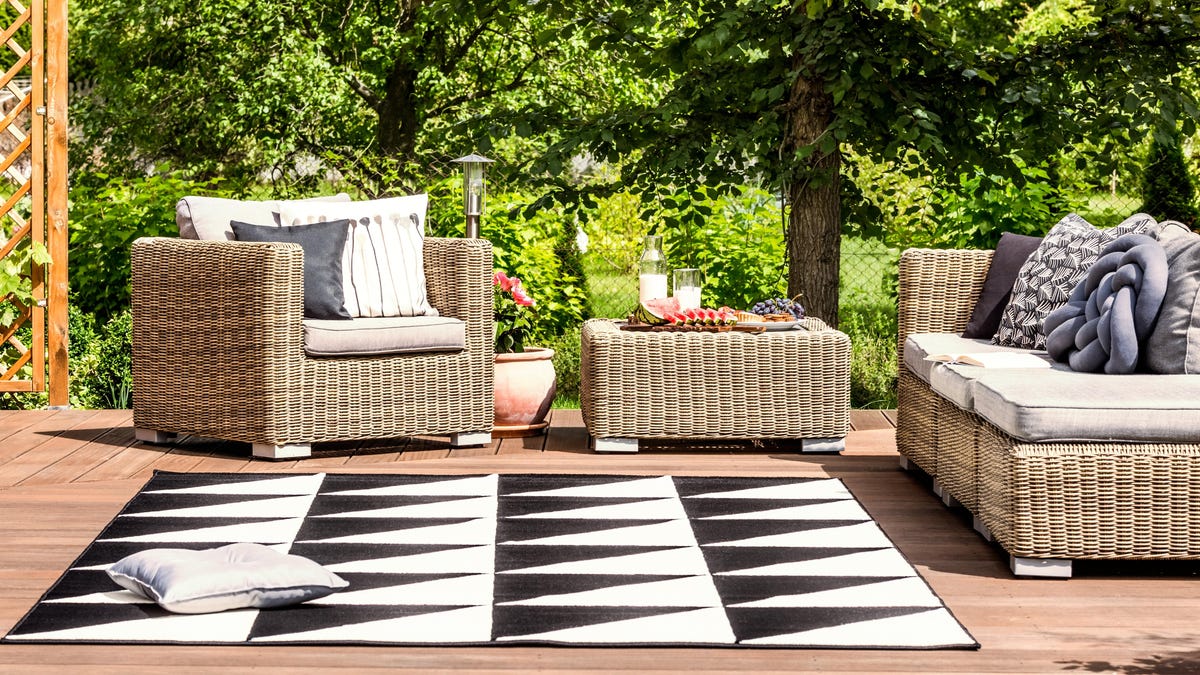How to Clean an Outdoor Rug Before Putting It Away for the Season
Anyone fortunate enough to live somewhere with outdoor space—whether it’s a compact patio, sprawling deck, or tiny balcony—has had a distinct advantage throughout the pandemic: Having a place to sit that’s not the inside of their home. Even those...


Photo: Photographee.eu (Shutterstock)
Anyone fortunate enough to live somewhere with outdoor space—whether it’s a compact patio, sprawling deck, or tiny balcony—has had a distinct advantage throughout the pandemic: Having a place to sit that’s not the inside of their home. Even those who hadn’t taken advantage of these areas before have been purchasing outdoor furniture and creating some sort of al fresco living space.
An outdoor rug is a key component of these sitting areas—making a few chairs and a small table feel like its own room. But as the summer season comes to a close, you may want to consider bringing your rug inside for the winter.
And before you roll it up and put it in the garage, basement, or storage area, you may want to clean it. Here’s how to do that, courtesy of Shay Tilander at Family Handyman.
How to clean an outdoor rug
As it turns out, cleaning an outdoor rug is pretty similar to cleaning an indoor rug, Tilander explains. Start by shaking out the rug, either by yourself or with a helper. For especially large rugs, it may be easier to find a sturdy clothesline, low tree branch, or outdoor railing, and beating it with some sort of stick (like a broomstick). You might want to pop on a face mask for this part—a lot of dust and debris is going to come out of that rug, even if you vacuum it regularly.
G/O Media may get a commission
Which brings us to the next step: Thoroughly vacuum both the front and back sides of the rug. (Of course, if you’re using a regular indoor vacuum, make sure the rug is completely dry before attempting to vacuum.)
Now it’s time to get out the hose. Place the rug on a concrete/wood/brick/non-dirt surface (ideally on a slope, if possible) and spray it down with a hose until the water running off of it is clean.
Check the manufacturer’s washing instructions, if you haven’t done so already, and see if they say anything about soap. If not, Tilander says that putting some mild dish soap in a bucket of warm water will do the trick.
Then use a soft-bristled brush and the soapy mixture to scrub the rug from end-to-end. If you come across stains that won’t budge, he recommends making a paste out of baking soda and peroxide and using it as a spot treatment.
Now, the hose comes out again, because it’s time to rinse. And again, hose off the carpet until the water that runs off is clear (and this time, not soapy).
How to dry and store an outdoor rug
While draping the rug over a railing to dry might seem like a good idea, Tilander says to avoid doing that, because it can cause the rug to lose its shape.
Instead, he suggests putting it down flat in an area that gets plenty of sunlight. Once one side is dry, flip it over and dry the other side. “After it dries, the rug may feel stiff and uncomfortable,” Tilander writes. “Give it some time. It will soften up.”
Finally, it’s time to roll up the rug and store it for the winter. And though it may seem like a good idea to roll it so the carpet side is on the inside (and therefore, protected), Tilander recommends doing the opposite.
“That way when you unroll it, it will curl downward,” he explains. “If you roll it the other way, it will curl upward and create a tripping hazard. After a while, the rug will lay flat again.”

 AbJimroe
AbJimroe 
































